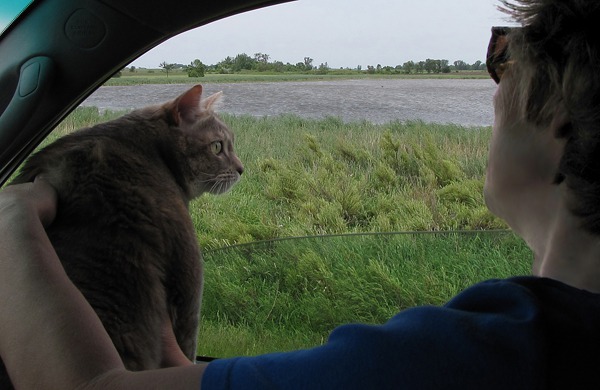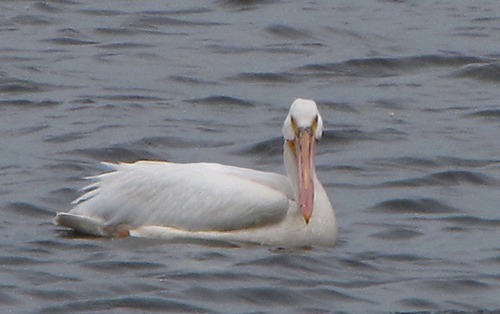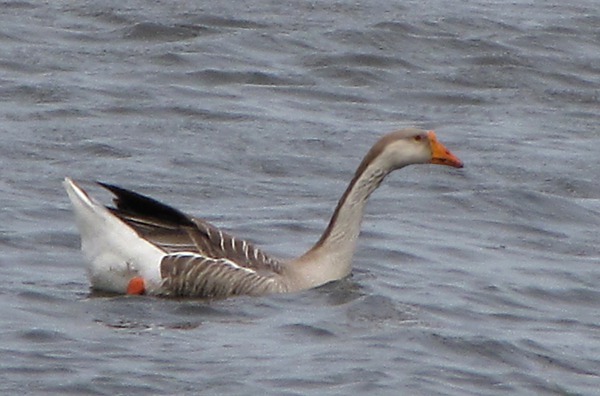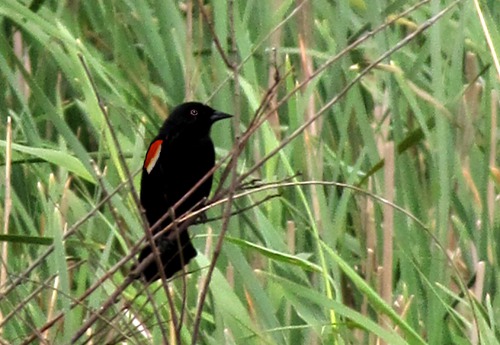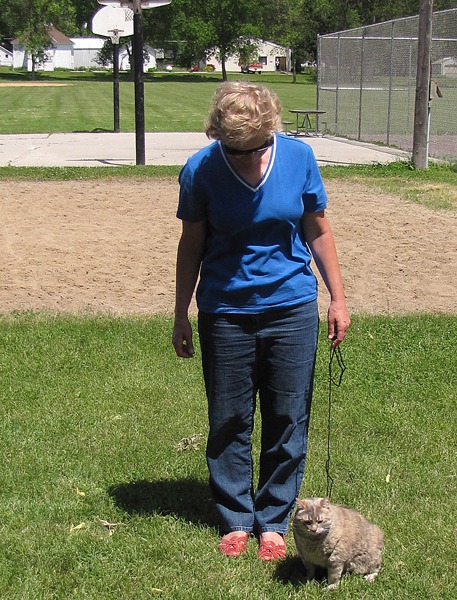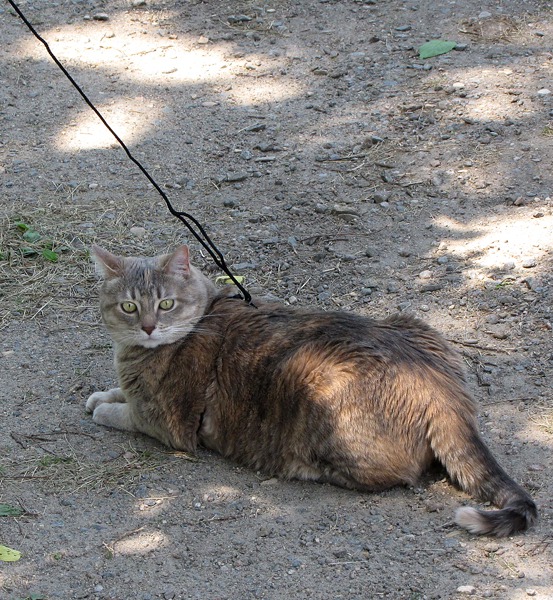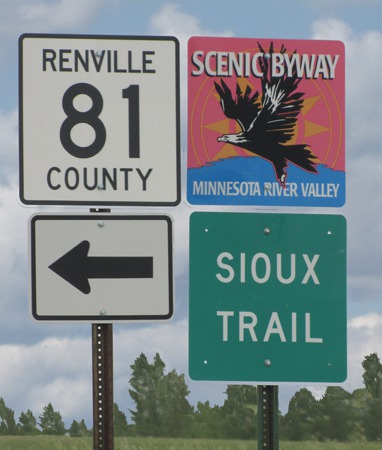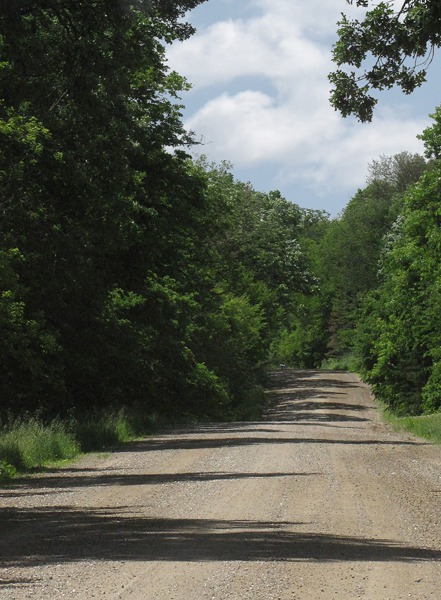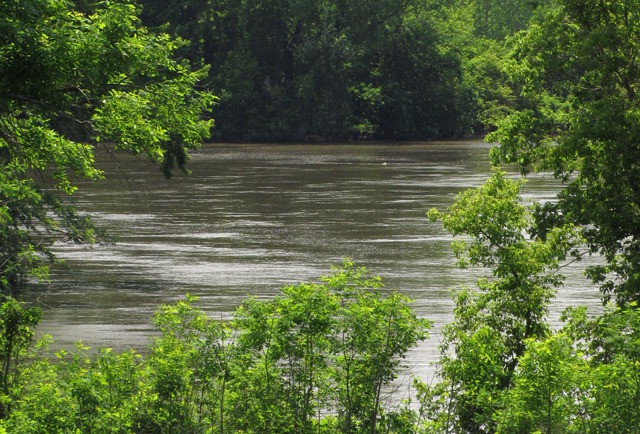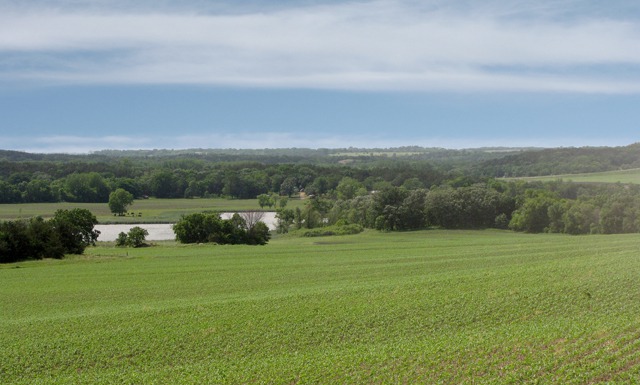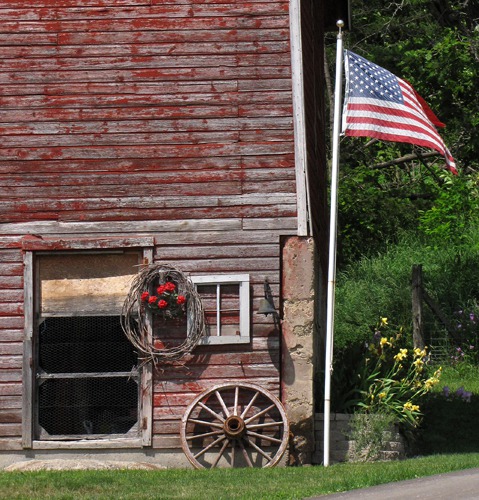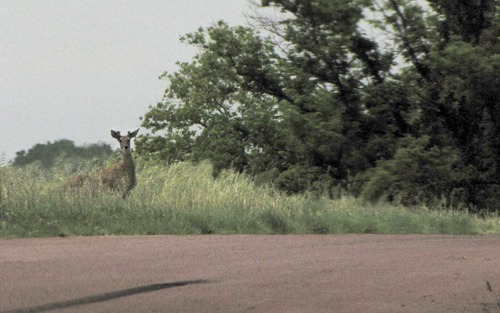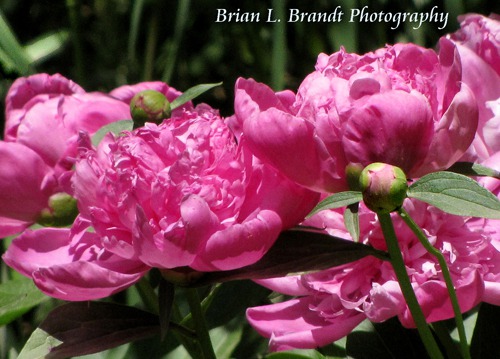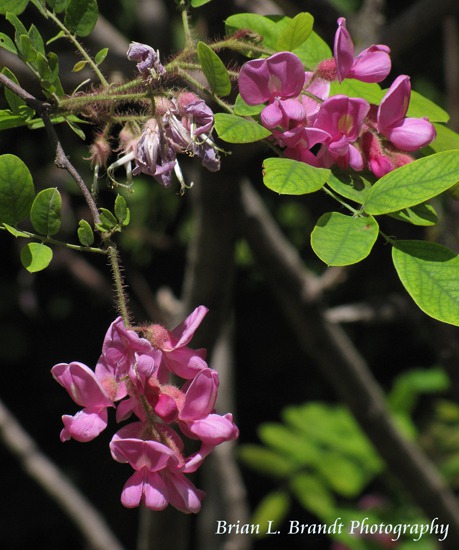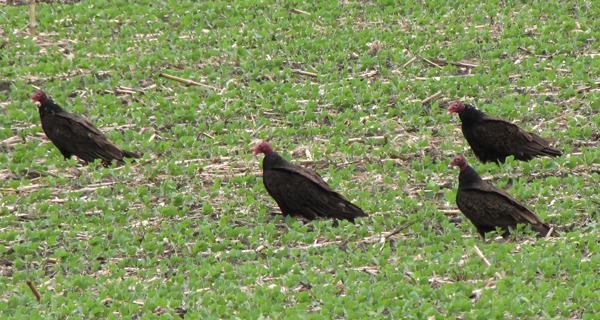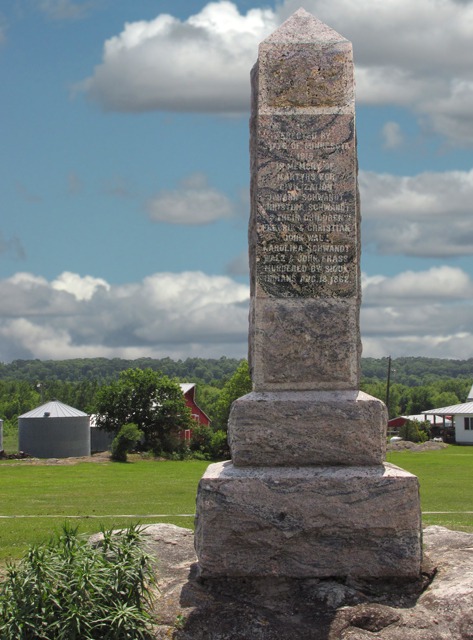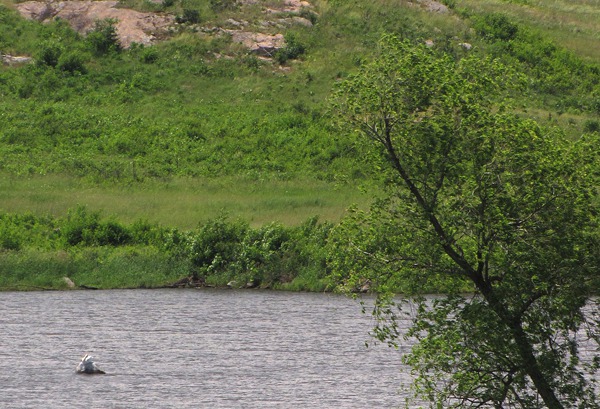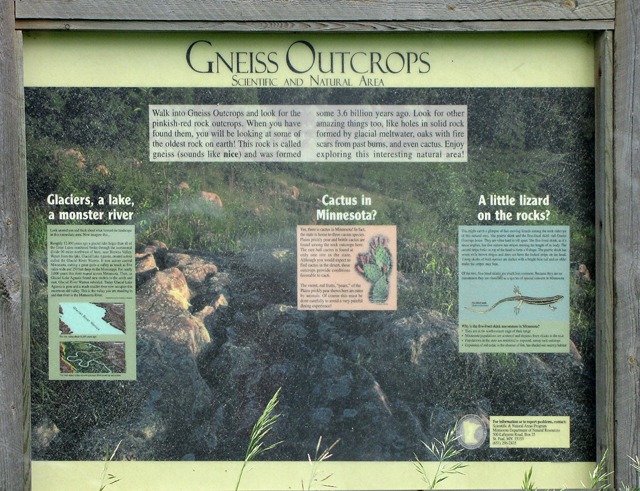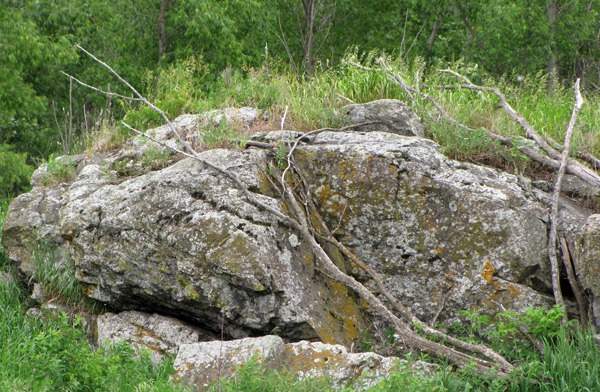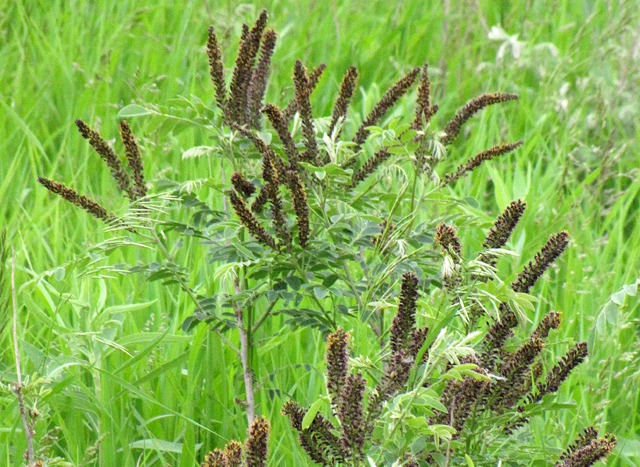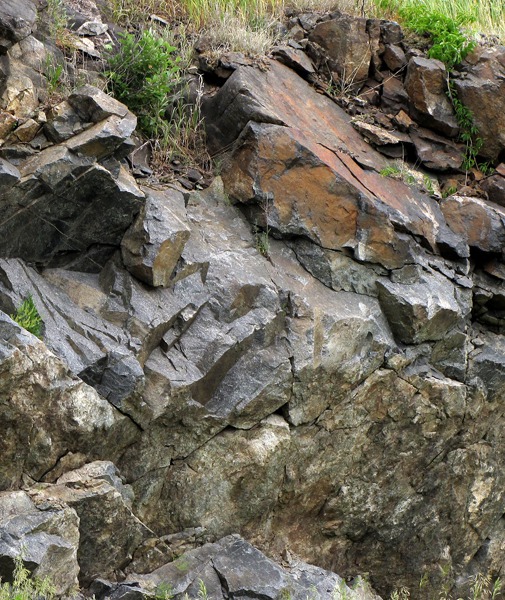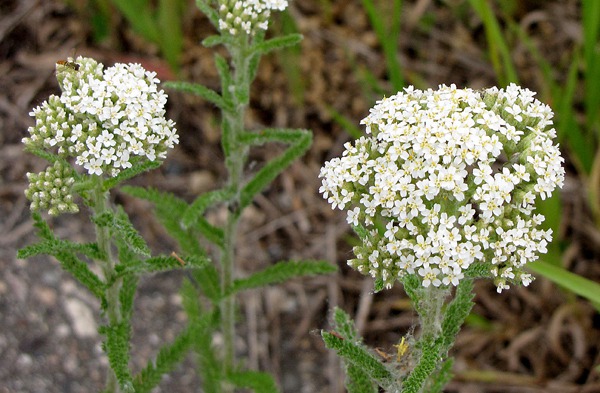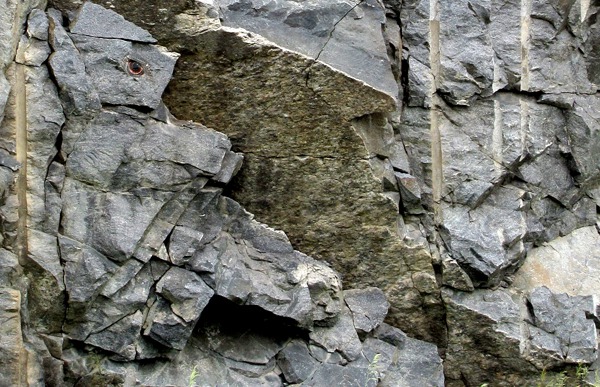Around the corner and another young buck whitetail in the road stopped for a second before melting into the trees.
We saw what we at first thought was a fishing boat in a small river-side pond, of which there were dozens in the valley. But it turned out to be a pelican sitting on a rock. Too far away to get details, but interesting to see, nonetheless.Granite Falls and Environs: We ran out of gravel and continued to follow the Byway on small paved roads that eventually lead us to Granite Falls. I had high hopes for Granite Falls -- having been to Granite Falls in Washington and actually seeing a falls going over granite, as one might be forgiven for expecting. But in Granite Falls MN, not so much.
The byway website described two State Natural Areas protecting big granite outcrops with special lizards and all manner of stuff like cactus; they sounded very intriguing. So was there a Granite Falls on the river? The reality of it was that there were no signs in town that we saw for the falls. We stumbled on it by accident trying to find the granite outcrops after getting burgers to go at a Hardees in town that we couldn't really recommend. There was parking for two cars where the power plant house was at river's edge at the falls, and they were both taken. And it was raining. So no Granite Falls falls pictures, although a huge flock of pelicans in an eddy below the falls would have been a great shot -- but we were limited to a glimpse of it as we drove by at highway speed.
Gneiss Outcrop Scientific and Natural Area: From the byway website again: "Gneiss Outcrop Scientific and Natural Area contains gneiss outcrops, formed approximately 3.8 billion years ago, among the oldest known rock on the earth's surface. This SNA's significance steadily increases as other outcrops along the Minnesota River are exploited for granite mining, housing, and recreational use. These pyramidal outcrops along the Glacial River Warren Valley rise to about 50 feet above the general level of the land, revealing parallel bands of gneisses.
Granitic gneiss is light-colored, pink to red; the less common hornblende-pyroxene gneiss is darker, ranging from gray to black. Garnet-biotite gneiss appears in dark and light gray variations. In addition to these metamorphic rocks, the outcrops reveal igneous rock complexes, formed by heat and pressure below the earth's surface. A natural lake lies between the two major rock outcrops, providing a stunning contrast to the adjacent rock cliffs. The very rare Great Plains prickly pear and brittle cactus can be found on dry rock; the rare Carolina foxtail, rare little barley, and mousetail grow in shallow depressions among the outcrops."
Unfortunately the directions on the website didn't quite work, and while we found the general area, we found no way in. Too bad!
We meandered down a dirt road that ran alongside the geologic area and saw a hunk of granite -- just to keep the long meander from being a total granite-less waste of gas.
Near the visible granite, Louise spotted one heck of a lead plant colony. It was monster-sized compared to the lead plant we see in South Dakota -- soil and moisture!
So off to area two.
Blue Devil Valley Preserve: Again, from the byway website, "Blue Devil Valley Preserve contains a granite outcrop community within the Minnesota River Valley that supports one of the largest known populations of the rare five-lined skink. Normally occurring further east, this species of lizard occurs only in widely separated areas this far west. Open, sunny bedrock exposures with loose surface rock and little or no vegetation these features make up the preferred habitat of the five-lined skink. Summer visitors may see these little lizards basking on warm, sunny granite outcrops.
Xeric prairie species, such as the brittle cactus, little bluestem, harebell, and pasque flowers, are common among the outcrops and scattered bur oak. Management at this site is focused on removal of eastern red cedar and other woody plant species that have encroached on the site in the absence of fire. Prescribed burns are also enhancing the prairie community through control of woody species. The Nature Conservancy gifted this site as an SNA to the State of Minnesota. Spring through fall is a good time to view the wildflowers."
Well, no. When we got to the spot where the trailhead was supposed to be, there was a pullout with some conservation trucks in it, but the "trail" was only a crushed down path of knee-high wet grass recently made by the conservation workers that lead into a swamp. We weren't "foot-geared" for a swamp slog, and it was still threatening rain, so we opted for a road-side lunch-break of soggy take-out Hardees burgers, greasy onion rings, and torpid fries. At least we saw more granite, and Louise found some lovely little road-side flowers.
As we drove back up the road to turn around to head for Marshall, Louise found a perfect example of a "Kentucky Blue Grass Desert.
As we passed the granite cut near the main road, we saw a rock-a-bye-baby that reminded us we need to start looking for a motel. We got to Marshall and looked at a few motels and ended up (by accident, we found out the next morning) at an AmericInn. After getting soaked $50 for Leesha two years ago at the AmericInn in Medora, ND, (and getting a mealy-mouthed response from corporate when we complained) we had avoided them ever since. But this one was nice and had a pet room near the door.
So we unloaded Sassy, and she immediately made herself at home -- her first motel! It wasn't until we checked out the next morning that we discovered they don't take cats. "Allergies" the woman at the front desk said. They take dogs. Dogs make my eyes water; they bark in the rooms; they stink, and they poop on the driveway. Phooey on those AmericInn guys.
Text by Brian and Louise, Photos by Brian. Text and photos copyright 2011 Goin Mobyle, LLC.


